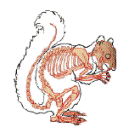
José Ferrer goes eye to eye with himself in Whirlpool (dir. Otto Preminger, 1949).
Ben Hecht's screenplay for Whirlpool is so outrageously silly for the first part of the film that it's hard not to think he's going for parody (he shares credit with Andrew Solt, so I'm just guessing that he's responsible for some of the dialogue in question). At times, one thinks one is watching The Lost Skeleton of Cadavra, for example when Gene Tierney tells her psychoanalyst husband that she wishes she were "brighter" so she could share his love of "science" with him. Some of this silliness actually gets contextualized by later plot developments, but there are still unaccountable moments of lunacy, as when Ferrer's shady hypnotist David Korvo meets Fortunio Bonanova at a high society party and publicly diagnoses him as a chronic depressive with violent tendencies, finally holding up his scarred wrist as proof of a recent suicide attempt--to Bonanova's awe and delight!
The usual Preminger pleasures are in place: the swooping camera, the rich chiaroscuro shadings, the gleaming tapestry of social elites and nefarious infiltrators. Only Ferrer is remarkable among the lead roles. Richard Conte's "gangster" accent (for so, alas, it cannot avoid being perceived in light of his other roles and the filmic conventions of the day) makes him fairly unbelievable as a world-famous psychiatrist. Gene Tierney, as so often, seems to sleepwalk through her part, and the fact that the script accommodates this quality only helps up to a point. It doesn't matter: the whole is a prime specimen of one of those midcentury pseudo-Freudian thrillers that are irresistible if you're into that sort of thing.










